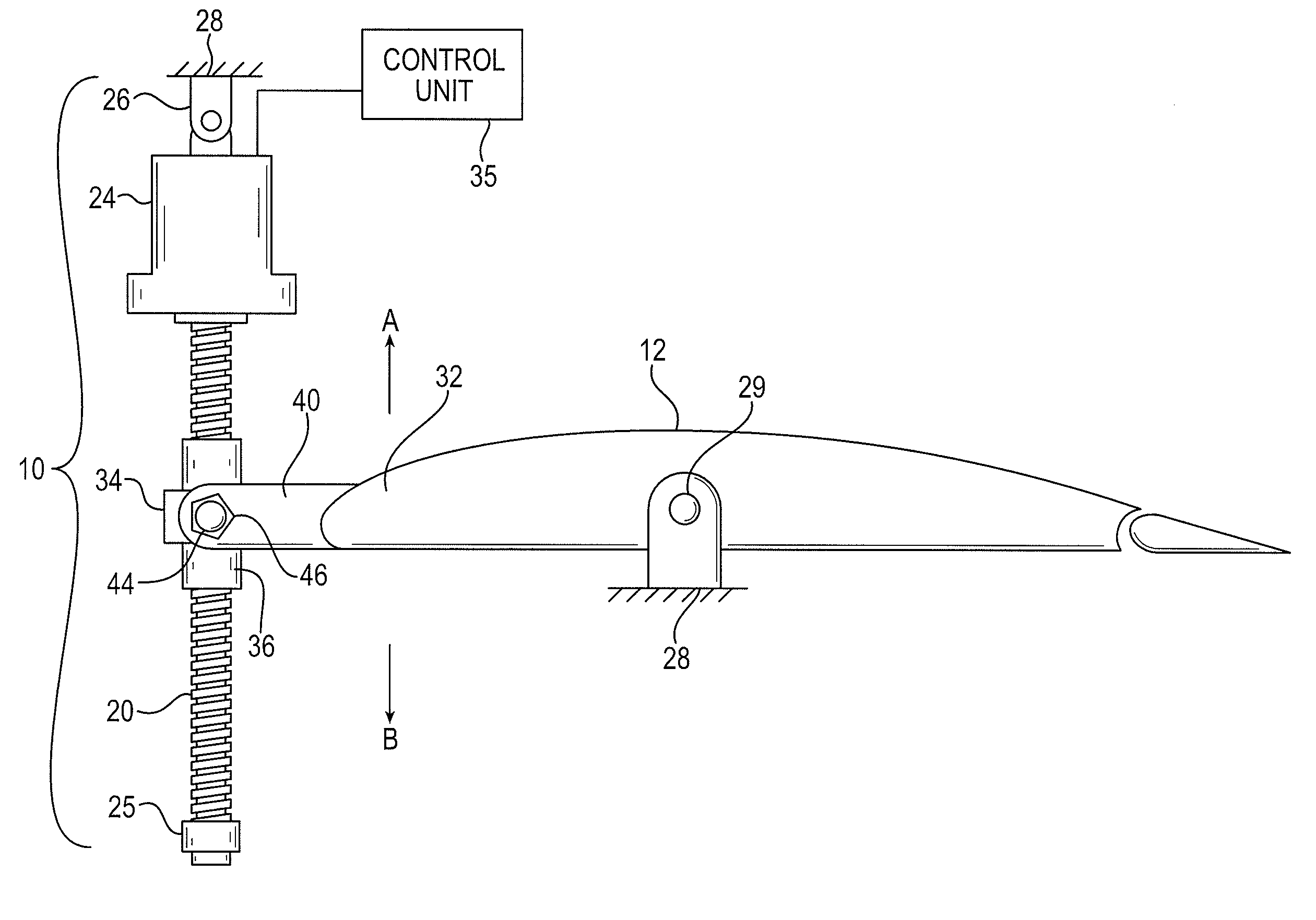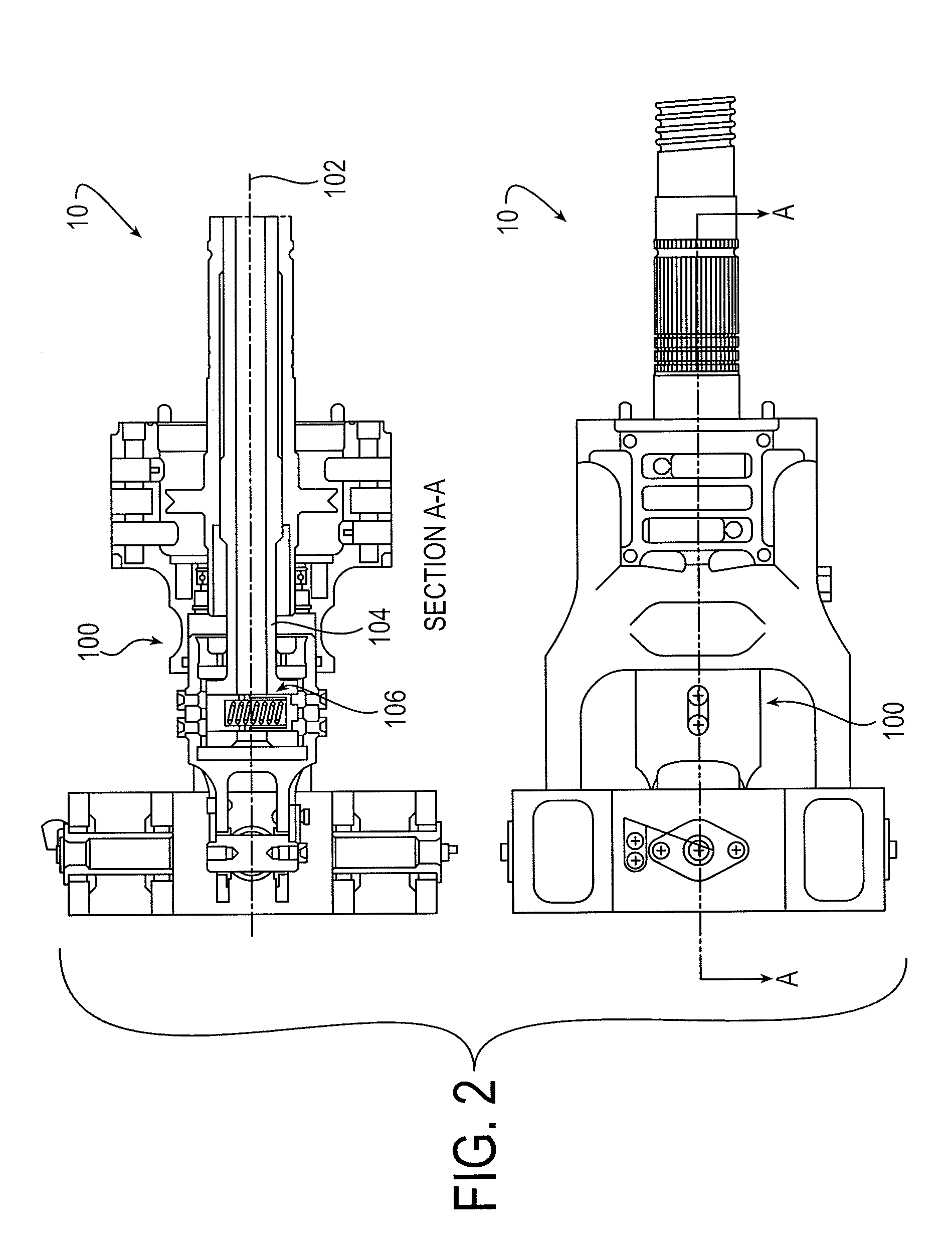Tie Rod Lock
a technology of tie rods and locking rods, which is applied in the direction of mechanical equipment, transportation and packaging, and machining, etc., can solve the problems of complete loss of control of the horizontal stabilizer, and achieve the effect of increasing leverage and control
- Summary
- Abstract
- Description
- Claims
- Application Information
AI Technical Summary
Benefits of technology
Problems solved by technology
Method used
Image
Examples
Embodiment Construction
[0068]Looking now to FIG. 1, a representative stabilizer actuator 10 is shown for selectively controlling the position of a horizontal stabilizer 12. Although the actuator 10 is shown in a vertical orientation, the orientation of exemplary actuators may be different, and in particular embodiments is reversed from that which is shown in FIG. 1. The actuator 10 a primary ball nut assembly 36 connected by threads with a ballscrew 20. The ballscrew 20 may extend generally vertically and may be connected at its upper (or lower) end to a hydraulic or electric drive motor and gear assembly 24. An end cap 25 is fixed to the opposite lower (or upper) end of the ball screw 20 to assure that the ballscrew 20 will not be unthreaded from the primary ball nut assembly 36. The drive motor and gear assembly 24 is connected to an upper (or lower) support gimbal 26 which in turn is pivotally secured at a fixed position to a portion of the rudder section or tail section 28 of the fuselage. The drive m...
PUM
 Login to View More
Login to View More Abstract
Description
Claims
Application Information
 Login to View More
Login to View More - R&D
- Intellectual Property
- Life Sciences
- Materials
- Tech Scout
- Unparalleled Data Quality
- Higher Quality Content
- 60% Fewer Hallucinations
Browse by: Latest US Patents, China's latest patents, Technical Efficacy Thesaurus, Application Domain, Technology Topic, Popular Technical Reports.
© 2025 PatSnap. All rights reserved.Legal|Privacy policy|Modern Slavery Act Transparency Statement|Sitemap|About US| Contact US: help@patsnap.com



